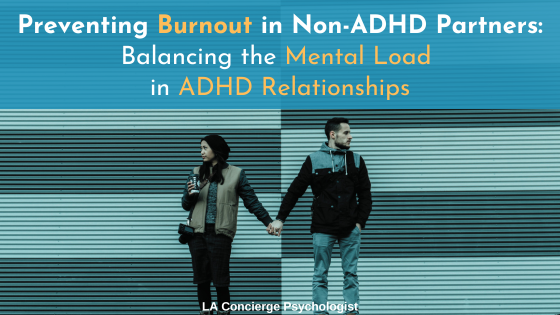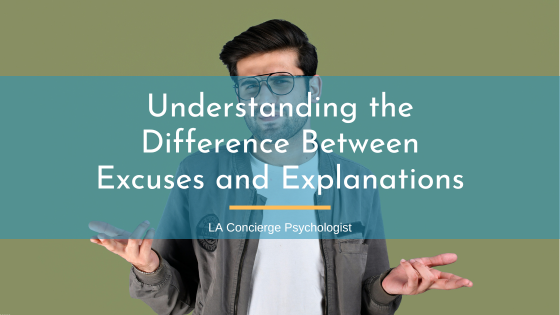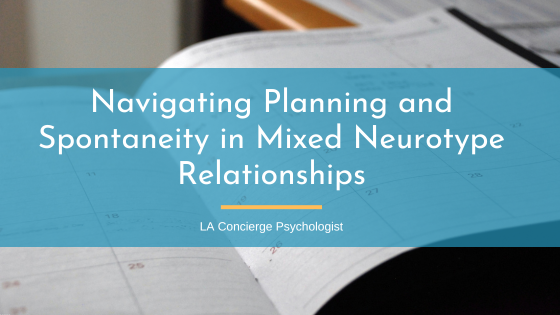The conversation about diagnoses is rarely a binary one, especially in mental health and psychology. When we examine autism, Attention-Deficit/Hyperactivity Disorder (ADHD), and Obsessive-Compulsive Disorder (OCD), it becomes clear that these don’t exist in isolation; they intersect, overlap, and often co-occur in ways that challenge traditional diagnostic boundaries.
OCD, for instance, is highly co-occurs with other conditions. Research shows that 69% of people with OCD experience at least one additional diagnosis[1], such as depression, anxiety, autism, or ADHD. For those navigating these overlapping conditions, it can feel like untangling a knotted thread: Where does one condition end and another begin?
As psychologists specializing in neurodiversity, we’ve observed that autism, ADHD, and OCD frequently coexist in intricate, sometimes paradoxical ways. While historically viewed as distinct diagnoses, emerging research reveals shared mechanisms, overlapping symptoms, and bidirectional relationships that complicate and enrich our understanding of neurodivergence.
This article explores the connections, distinctions, and challenges posed by autism and ADHD vs OCD.
The Neurodevelopmental Connection between ADHD, OCD, and Autism
At first glance, autism and ADHD, both categorized as “neurodevelopmental disorders” in the Diagnostic and Statistical Manual (DSM), appear fundamentally different from OCD, which is classified as an anxiety disorder. However, their high rates of co-occurrence suggest deeper, intertwined roots. Roughly 50% of autistic people also meet the criteria for ADHD. Up to 17% of autistic people also have OCD[2]. On the flip side, 8-25% of individuals with OCD also meet criteria for ADHD[3]. Those diagnosed with OCD are four times more likely to later receive an autism diagnosis.
These statistics aren’t just numbers; they hint at shared neurological and cognitive mechanisms that blur traditional diagnostic lines. All three neurotypes involve executive dysfunction, though the underlying causes differ. In ADHD, the primary struggle is with inhibition, working memory, and task initiation. Autistic individuals, meanwhile, often face challenges with cognitive flexibility and shifting attention. OCD, by contrast, creates a kind of hyperfocus on obsessive thoughts, leading to a different form of executive overload.
Sensory processing differences further complicate the picture. While sensory sensitivities are a hallmark of autism, they’re increasingly recognized in both ADHD and OCD. An autistic person might avoid certain textures due to genuine sensory discomfort, while someone with OCD might avoid the same textures due to contamination fears.
Similarly, ADHD-related sensory seeking, like fidgeting or touching objects for stimulation, can look superficially similar to autistic stimming or even OCD compulsions, though the motivations can differ dramatically.
Can You Have Autism, ADHD, and OCD?
Autism and ADHD
Approximately 5-10% of children worldwide are ADHD-ers, while autism’s prevalence is estimated to be about 1-2% of the population. These frequently co-occur, with studies suggesting that about 50% of autistic children also meet the criteria for ADHD. This high co-occurrence rate led to changes in the DSM-5, which now allows for the dual diagnosis of these conditions known by many neurodivergent people as AuDHD.
Autism and OCD
The relationship between autism and OCD is equally compelling. Research has demonstrated a significant connection between these conditions. Approximately 84% of autistic people have some form of anxiety disorder, with up to 17% specifically experiencing OCD[4].
One particularly revealing study found that 47% of individuals with OCD had clinically significant autistic traits, with 27.8% meeting full diagnostic criteria for autism[5]. This shows that a significant proportion of people with OCD may be undiagnosed autistic people.
ADHD and OCD
The relationship between ADHD and OCD presents a fascinating paradox. These conditions appear as opposites in some ways, with ADHD characterized by impulsivity and difficulty with sustained attention, while OCD involves excessive caution and hyperfocus on specific concerns. Yet they co-occur at rates higher than would be expected by chance, with 8-25% of people with OCD also meeting criteria for ADHD[6]. In fact, ADHD is the most common co-occurring condition among early-onset OCD.
This apparent contradiction has led researchers to explore the complex relationship between these conditions and their underlying mechanisms.
What are the Overlapping “Symptoms” between ADHD, Autism, and OCD?
1. Repetitive Behaviors and Routines
One of the most significant areas of overlap involves repetitive behaviors and rigid routines. Autistic individuals often engage in behaviors that can resemble OCD compulsions, such as specific routines or ways about executing tasks. Similarly, some ADHD individuals develop highly structured routines to compensate for executive functioning challenges.
However, the underlying motivations differ significantly. In OCD, compulsions serve to reduce anxiety caused by obsessive thoughts. In autism, repetitive behaviors are often self-soothing or intrinsically rewarding. For those with ADHD, routines may help compensate for difficulty with organization and time management. Understanding these different functions is crucial for accurate diagnosis and treatment.
2. Attention and Focus
All three conditions affect attention but in different ways. ADHD involves difficulty directing and sustaining attention, especially for non-preferred tasks. In OCD, obsessive thoughts can consume attention, creating what researchers call “executive overload.” Autistic individuals may have intense, focused attention for special interests while struggling with divided attention.
These attentional differences can create school and work challenges that appear similar on the surface but require different interventions. A student who cannot complete assignments might be experiencing ADHD-related distraction, OCD-related obsessive thoughts, or autistic hyperfocus on other interests, each requiring a different approach.
3. Sensory Processing Differences
Sensory processing issues are well-documented in autism but are increasingly recognized in both ADHD and OCD. In autism, sensory sensitivities or seeking behaviors are core features. People with ADHD often experience heightened sensory awareness and seeking behaviors. Individuals with OCD may have sensory sensitivities that trigger or exacerbate obsessions.
These sensory differences can lead to behaviors that look similar but serve different functions. For example, avoiding certain textures might be due to sensory aversion in autism, difficulty filtering sensory information in ADHD, or contamination fears in OCD.
4. Executive Functioning Challenges
Executive functioning, the set of cognitive processes that help us plan, organize, and complete tasks, is affected in all three conditions but manifests differently. ADHD is considered a disorder of executive dysfunction, directly affects executive functions, particularly working memory, inhibition, and time management. Autistic individuals often have challenges with cognitive flexibility. In OCD, executive functions become “overloaded” due to intrusive thoughts.
These different mechanisms can produce similar outcomes, such as difficulty completing tasks, maintaining organization, or adapting to changes, but they require different interventions based on the underlying cause.
Can you Distinguish Between Similar Neurodivergent Behaviors?
Repetitive Behaviors: Compulsions vs. Stimming vs. Fidgeting
One of the trickiest challenges involves distinguishing between repetitive behaviors across these conditions.
- OCD compulsions: Serve to reduce anxiety triggered by obsessive thoughts and follow a cause-effect pattern. For example, “If I don’t check the door five times, something bad will happen.” They’re often experienced as unwanted but necessary, and successfully reducing anxiety reinforces the behavior.
- Autistic repetitive behaviors: Often self-soothing or intrinsically rewarding and may provide sensory regulation. They’re not typically connected to specific fears or obsessions, and disruption causes general anxiety rather than fear of specific consequences.
- ADHD fidgeting: Helps to regulate arousal and attention and is often unconscious or semi-conscious. It serves to increase stimulation during understimulating tasks and isn’t typically driven by anxiety but by the need for movement or stimulation.
Here’s an example:
A child taps their fingers repeatedly. In ADHD, this might help maintain focus during a boring task. For an autistic person, rhythmic sensations might be soothing. In OCD, the child might believe they must tap a specific number of times to prevent something bad from happening.
Intrusive Thoughts vs. Hyperfocus vs. Perseveration
Another area of potential confusion involves patterns of thought.
- OCD obsessions: Often unwanted, intrusive thoughts cause significant distress, often focused on harm, contamination, symmetry, or taboo topics. They’re often experienced as foreign to one’s character or values and lead to anxiety and compulsive behaviors to neutralize the thoughts.
- Autistic perseveration: This involves difficulty shifting attention away from preferred topics, perceived injustices, or occurrences that feel illogical. It’s not necessarily experienced as unwanted or distressing and is more focused on specific topics.
- ADHD hyperfocus: This involves intense absorption in high-interest activities and difficulty disengaging from stimulating tasks. It’s not driven by anxiety and is often pleasurable rather than distressing. Though, some ADHD-ers report distress from the negative consequences of hyperfocus (e.g., being late to something, loved one becoming upset).
Misdiagnosis and Missed Diagnosis of ADHD, Autism, and OCD
The overlapping traits between these neurotypes create significant potential for misdiagnosis or missed co-occurring experiences. This often leaves people struggling for years before getting a diagnosis because their symptoms don’t quite match up, and one or more diagnoses can be missed.
OCD Misdiagnosed as ADHD
This often occurs when OCD-related executive overload creates symptoms that mimic ADHD. Obsessive thoughts consume cognitive resources, making it difficult to focus. Compulsions can interrupt task completion, and anxiety may present as restlessness or fidgeting.
When OCD is successfully treated, the ADHD-like characteristics often improve, something that wouldn’t happen with true ADHD. One study involving adolescents found that as OCD symptoms decreased through treatment, ADHD-like inattention also decreased, suggesting these weren’t true ADHD symptoms but manifestations of OCD.
ADHD Misdiagnosed as OCD
This is less common but can occur when ADHD behaviors are misinterpreted. Compensatory routines for executive functioning difficulties may look like compulsions. Skin-picking or hair-pulling related to sensory seeking or impulsivity might be interpreted as OCD behaviors. Difficulty transitioning between activities might be seen as rigidity rather than an issue with cognitive shifting.
Autism Misdiagnosed as OCD
Autistic traits can sometimes be misinterpreted as OCD symptoms. Insistence on sameness and routines might be seen as compulsions. Special interests might be viewed as obsessions. Sensory aversions might be interpreted as contamination fears.
The key difference often lies in the function and experience of these behaviors. For instance, an autistic person who arranges belongings in a specific way may do so because it’s visually pleasing or provides a sense of control, not as a deterrent for potentially bad things from happening.
Missing Co-occurring Conditions
Perhaps most concerning is when one condition is diagnosed, but co-occurring conditions are missed, which can be distressing and interfere with treatment. An autistic person’s ADHD symptoms might be attributed solely to autism. OCD compulsions might be dismissed as autistic routines. ADHD impulsivity might mask underlying OCD or autism.
This highlights the critical importance of a comprehensive assessment that considers multiple conditions simultaneously. Given the high rates of co-occurrence, it’s best to work with a practitioner who can actively screen for all three conditions.
What are the Implications for Treatment
Understanding the distinctions and overlaps between autism, ADHD, and OCD has significant implications for treatment.
Medication Considerations
ADHD typically responds to medications targeting dopamine (stimulants) or norepinephrine (non-stimulants). OCD is often treated with medications affecting serotonin (SSRIs). Autism has no specific medication, but co-occurring struggles may be targeted.
Importantly, stimulant medications that help ADHD may exacerbate OCD symptoms in some cases, underlining the importance of accurate diagnosis before medication treatment. For individuals with both conditions, medication selection and monitoring require careful consideration.
Neurodivergent Therapy Approaches
Each condition benefits from different therapeutic approaches, particularly neurodivergent-affirming therapy. ADHD responds well to skills-based interventions for executive functioning, time management, and organization. OCD is typically treated with Exposure and Response Prevention (ERP) to break the cycle of obsessions and compulsions. Autism interventions often focus on developing self accommodations, self advocacy skills, and energy management.
When there are multiple differing neurotypes, therapy must be adapted. For example, standard ERP for OCD may need modification for autistic individuals to account for sensory sensitivities.
Adaptations for Co-occurring Conditions
When treating individuals with multiple conditions, several adaptations are beneficial.
For example, with autistic individuals with OCD, addressing sensory processing issues before beginning exposure work is crucial. Using visual supports and concrete language in therapy, incorporating special interests into treatment, or taking a slower approach to exposure work can increase effectiveness. Clinicians must also be careful to distinguish between helpful routines and harmful compulsions.
For individuals with ADHD and OCD, balancing structure (helpful for ADHD) with flexibility (needed for OCD treatment) becomes important. Using medication strategically while monitoring for potential exacerbation of OCD symptoms is essential. Addressing executive functioning challenges that might interfere with OCD treatment can improve outcomes.
How To Manage Life With OCD, Autism, and ADHD
If you have any of these neurotypes, or combinations of them, it presents unique challenges that require personalized strategies. Here are some ways to provide relief long term.
Structure and Flexibility
Finding the right balance between structure and flexibility is crucial. Too much rigidity can exacerbate OCD and limit autistic flexibility. Too little structure can increase ADHD challenges with organization and time management. Creating “flexible routines” that provide scaffolding without demanding perfect adherence can be an effective approach.
For example, a morning routine might help an autistic person feel grounded and ready to start the day but have enough flexibility for the ADHD need for novelty.
Understanding Your Triggers
Identifying personal triggers can help manage symptoms across these conditions. Sensory environments that increase dysregulation, stress factors that worsen OCD symptoms, and situations that deplete executive functioning resources all require awareness and planning.
Keeping a journal to track patterns can be invaluable in identifying specific triggers and developing personalized management strategies. Over time, this self-knowledge becomes a powerful tool for regulation.
Leveraging Strengths
Each neurotype brings potential strengths that can be leveraged. Autistic attention to detail and pattern recognition, ADHD creativity and ability to think outside the box, and OCD thoroughness and conscientiousness in appropriate contexts can all be valuable assets when properly channeled.
Rather than focusing exclusively on challenges, a strengths-based approach recognizes and builds upon these positive attributes, fostering self-esteem and adaptive functioning.
Neurodivergent Affirming therapy
Working with a neurodivergent-affirming therapist for your diagnosis and beyond your diagnosis can be life-changing. For people living with autism, ADHD, and OCD, or a combination of diagnoses, there are constant challenges that can arise from living in a neuroformative world. Being able to discuss your experiences and be validated by a professional can provide relief and a profound level of self-understanding.
No Two People Have the Same Experience
The unique and complex intersection of OCD, ADHD and autism requires specialized understanding and support to address the different needs of each person. Though people usually seek out and receive a diagnosis of either ADHD, OCD, or autism at first, it’s not unusual, once they become more familiar with their diagnosis, to notice certain traits or symptoms that don’t entirely fit. This often leads to discovering a secondary diagnosis to explain their experiences more fully.
If you think you may be AuDHD or have OCD and would like diagnostic clarity, learn more about our adult autism assessments (which consider co-occurring ADHD and OCD as part of the assessment process).
If you are interested in seeing a therapist who specializes in neurodivergent-affirming care at our practice, you can send us a message or book a free 20-minute consultation call with Dr. Barajas, Dr. Goldman, or Dr. Smith Han.
[1] Comorbidities in Obsessive-Compulsive Disorder. Sharma (et al). 2021
[2]Anxiety disorders in children and adolescents with autistic spectrum disorders. (Van Steensel et al. 2011)
[3] The Neurobiological Link Between OCD and ADHD. (Brem et al. 2014)
[4] Anxiety disorders in children and adolescents with autistic spectrum disorders. (Van Steensel et al.) 2011
[5] Autism spectrum disorders in adult outpatients with obsessive compulsive disorder. (Wikramanayake et al) 2018.
[6] The neurobiological link between OCD and ADHD. (Brem et al). 2014



